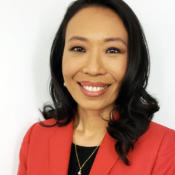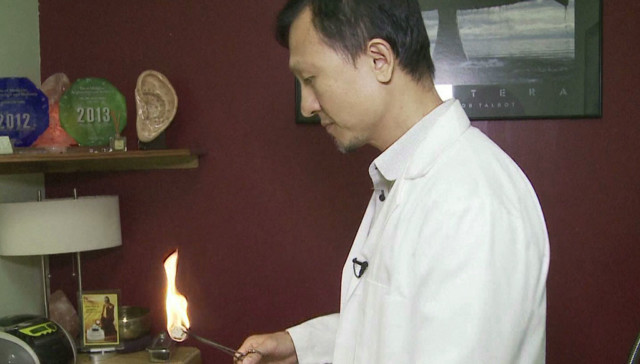At the 2016 Summer Olympics, it wasn’t just swimmer Michael Phelps’ strokes that got all the attention. It was the big purple marks all over his body, the result of a traditional Chinese medicine technique called cupping.
It involves using suction cups to stimulate circulation, designed to treat pains and inflammation. That helped sharpen the spotlight on Chinese medicine outside China.
CGTN’s Frances Kuo reports.
It’s the same mission at the U.S. Center for Chinese Medicine outside Rockville, Maryland. Inside is a 2,000 square-meter museum, said to be the first of its kind in the country.It’s headed by TCM professor, Dr. Bo Ji.
“Our exhibitions are for people from educational and research institutes, medical centers and everyday people,” Li explained. “We let them know the history, culture and advantages of traditional Chinese medicine.”
The museum is designed for Western visitors who may have heard about Chinese medicine but don’t know much about it. One interactive exhibit allows visitors to sit down with a statue of a traditional doctor from decades past who didn’t use fancy tools.
“A traditional doctor in a clinic had a table, a chair and a small pillow to test the pulse,” Li said. “Patients would sit here and let him test the pulse.”
Also in the museum, visitors can look at, pick up, touch and smell plants and herbs used in TCM. One example is Mai Dong, to help relieve dry mouth. According to TCM, dry mouth is a symptom of weak lungs, and the herb is used to maintain lung health.
Typically in TCM, different herbs are combined to create a special mix to best treat the patient’s condition. A traditional pharmacist’s wooden cabinet stores and organizes the herbs in a specific order.
Chinese medicine is based on the concept that the body is an organic whole comprised of two parts – the tangible body and the intangible spirit, or qi. And all over our body are more than 300 acupoints that correspond to our internal organs.
That’s the concept behind another TCM practice, acupuncture. It involves inserting fine needles into the body at specific points to treat illness. It’s practiced at a clinic next door to the museum. The hope is that both facilities will take the mystery out of TCM and help convince skeptics who dismiss TCM as non-scientific.
“A lot of my patients who are using western treatment have 1-2 large jars of painkillers every year,” Li said. “They had a lot of pain, and their headache comes back a lot. Acupuncture killed their headache eventually by adjusting their body environment. They don’t need painkillers anymore. We hope our traditional Chinese medicine could spread to all over the world to let more people benefit from it.”
Recently, the museum hosted medical experts from universities across the U.S. They discussed how to promote TCM and complement it with Western medicine.
Misha Cohen discusses a new Chinese law encouraging traditional Chinese medicine
CGTN’s Mike Walter interviews Misha Cohen of the Unviersity of California about China’s new law placing more focus on traditional Chinese medicine.
 CGTN America
CGTN America

